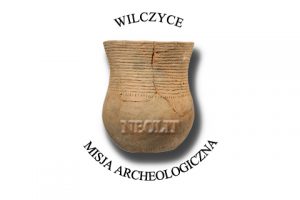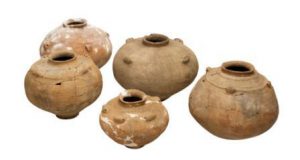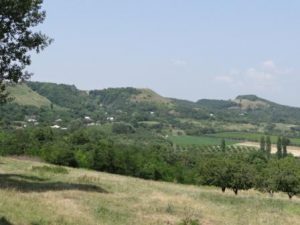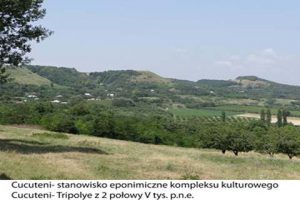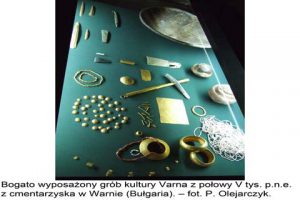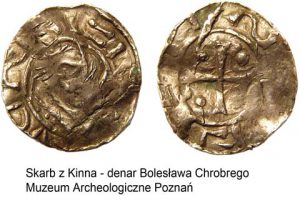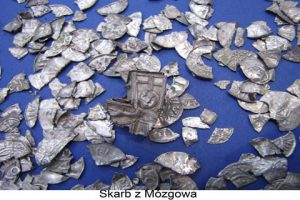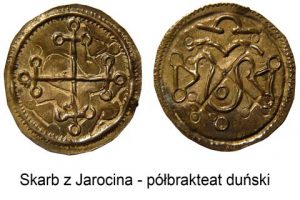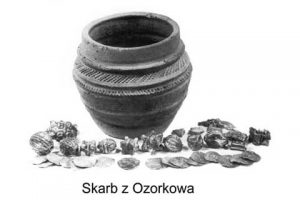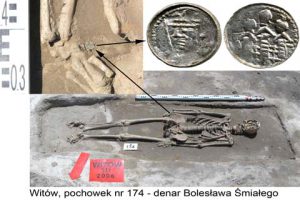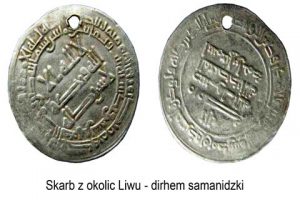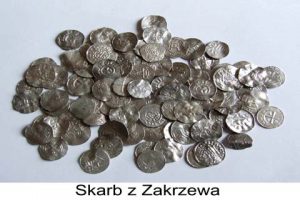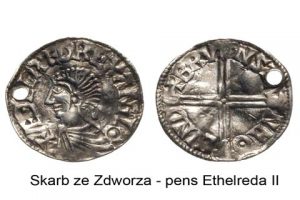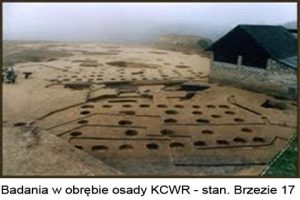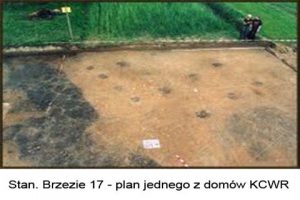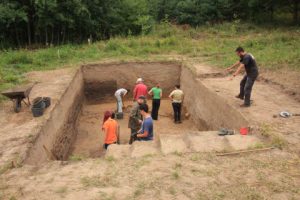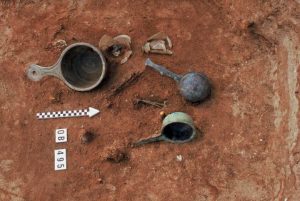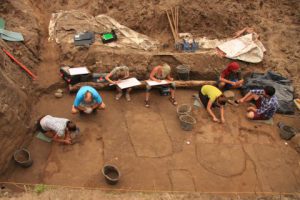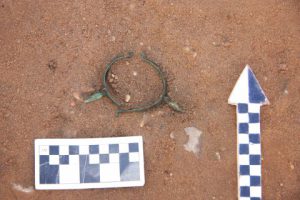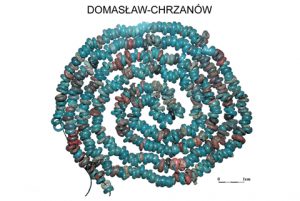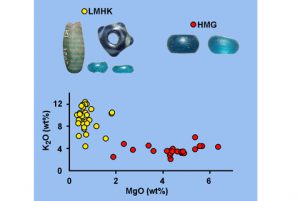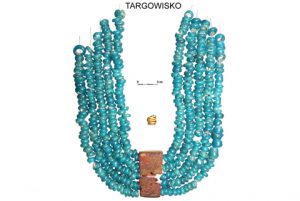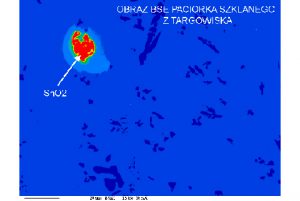AKTUALNOŚCI
Archaeological Mission in Wilczyce
Project information
Project title:: Man, the environment and the economy: Economic exploitation of Wilczyce micro-region in the Neolithic and Bronze Age.
Project lead: Dr Tomasz Boroń
Project lead, institutional: IAE PAN
Project financing: IAE PAN, Voivodship Landmark Preservation Inspectorate in Kielce – Sandomierz Office; Karpacka Spółka Gazownicza company, Sandomierz branch; Chief Executive Officer of Świętokrzyskie Voivodship.
Contact:
- e-mail: boron@iaepan.edu.pl
- telephone: 502 102 754
Project implementation
Institutions involved:
IAE PAN Institute, Warsaw,
Voivodship Landmark Preservation Inspectorate in Kielce – Sandomierz Office,
Karpacka Spółka Gazownicza company, Sandomierz branch,
Chief Executive Officer of Świętokrzyskie Voivodship,
Wilczyce Municipality
Researchers involved:
Dr Tomasz Boroń
Mgr Halina Królik
University of Warsaw students
Responsibilities: students – exploration, inventorying finds, drawing plans
Characteristics
Research objective:
Wilczyce 10, Świętokrzyskie Voivodship, is known as one of the most important Final Ice Age sites in Europe, yielding a collection of Magdalenian artefacts that is both huge and unique. The findings of research into Late Palaeolithic settlement were published in national and international journals — and the successes of the research have inspired the local authorities at Wilczyce to put up an archaeological open-air museum and a covered museum.
The resulting follow-up excavations, necessitated by the planned construction project, have revealed astonishing, unique traces of Neolithic settlement. Several thousand flint and ceramic artefacts, animal-consumption bones, and a plenitude of plant micro- and macro remains.
Detailed goals of the project:
The project agenda includes cataloguing the finds and searching for more of archaeological material. Thanks to the geo-morphological conditions, conducive to artefact preservation, it will be possible to accurately reconstruct the environment and have a look into the community’s economic arrangements. But specialist analyses have to be conducted on a wide scale. Their findings will be included in a typescript report on research outcomes, which will provide a basis for producing a monograph in the future.
Measures to achieve the goals:
The exceptional insights obtained from the remains of Wilczyce 10 settlement greatly expand our knowledge about Neolithic populations in southern Poland. Comprehensive research at Wilczyce is also of high importance for the micro-region.
Project timetable:
The project agenda involves several years of excavation research
Results so far:
Discovery of an exceptional Corded Ware sepulchral object, containing 13 whole vessels, 6 battleaxes, 6 axes, 29 arrowheads, a dog-fang pendant necklace and many bone and horn artefacts.
Planned results:
To publish a monograph on Neolithic settlement in Wilczyce micro-region
Forms of cult, religion and social organisation in Prehistory and the Middle Ages
Project information
Project title: Forms of cult, religion and social organisation in Prehistory and the Middle Ages
Project lead:Prof. dr hab. Sławomir Kadrow
Project lead, institutional: Institute of Archaeology and Ethnology (IAE PAN), Centre for Archaeology of Hills and Uplands, within Team E.1.
Project financing: statutory
Contact:
e-mail:slawekkadrow@gmail.com
telephone: +48 4222905 (Centre for Archaeology of Hills and Uplands, ul. Sławkowska 17, Kraków);
+48 698298837 (kom. Sławomir Kadrow);
Characteristics
Research objective:
To study material culture indicative of man’s ritualistic, religious and social practices.
Detailed goals of the project:
The research looks into all material traces and manifestations of ritualistic, religious and social practices of the Prehistoric and Medieval man. As indicated by archaeology’s experience to-date, these subjects have been largely discussed based on analyses of burial ritual. This is because all rituals (including burial-related), while epitomising a circulation of symbolic meanings in culture, invariably involve the use of material objects. And archaeology obviously takes interest in the past by studying material traces — primarily artefacts — of all kinds of human activity. Ritual, on the other hand, is largely associated with conventionalised cultural practices — religious and social. It represents a symbolic-expressive aspect of behaviour, carrying a certain message about social relations, often in a manner which is relatively dramatised or formalised. It assumes an especially important role at a time of crisis, by helping cope with uncertainty, and its significance is especially high in pre-writing communities. Ritual has been subjected — as well as giving testimony — to historical changes, and it very clearly signalled substantial changes in the realm of authority. Important features of ritual include its being coded by those who are not its executants, and also its performative nature. As it transpires from this description, the analysis of ritual in this particular context carries a big research potential. Simultaneously, the previously indicated characteristics of ritual point out — for yet another time — to the importance of studying it from many perspectives, that is (in other words) taking an interdisciplinary approach.
Archaeological, historical and (since 2013) sociological analyses of various manifestations of man’s ritualistic, religious and social (socio-cultural) practices, registered in Central Europe and the Balkans between the Neolithic and the Early Medieval times.
The focus of these analyses is on: cultural landscape, funeral rituals and religious practices, as manifested in clothing and devotional objects.
This research team’s assignment is to study the cultural landscape of Lesser Poland (Małopolska) in the Neolithic and Early Bronze Age.
One important element of studies into the cultural landscape is research at the Dinoš site in Montenegro.
Another item on the team’s research agenda is the analysis of symbolic-object manifestations of in the context of Lusitian Culture finds, and analysis of their meanings.
Interesting prospects are offered by studies into untypical examples of funeral customs in Barbaricum during the Roman Period and the Migration Period.
Wide-scale studies and analysis of clothing elements, devotional objects, funeral rites, and Byzantine religiosity, including its adaptation outside the borders of the Byzantine Empire.
Project timetable:
E.2.I. Study into the cultural landscape of Lesser Poland in the Neolithic and Early Bronze Age.
2012 – Drafting the texts of two articles: 1. „ Study into the cultural landscape of Lesser Poland in the Neolithic and Early Bronze Age in several selected regions of Lesser Poland”; 2. „Theory of cultural landscape research in light of experience from study into Neolithic and Early Bronze settlement micro-regions in Lesser Poland”; author: S. Kadrow.
2013 – Drafting the text of an article devoted to the cultural landscape of Cucuteni-Tripolye site; author: S. Kadrow.
E.2.II. Study into the cultural landscape of Dinoš, Montenegro.
2012 – Drafting the text of the article „Landscape research in Dinoš, Montenegro”; author: U. Bugaj.
E.2.III. Archaeology of Byzantine Empire (6th-14th centuries).
2012 – Drafting the text of the monograph’s chapter “Elements of Byzantine garb in light of iconographic, archaeological and written sources”; author: M. Wołoszyn.
2012 – Progress report on the subject: “Analysis of Byzantine religiosity in light of written, iconographic and archaeological sources (devotional objects, changes in funeral rites)”; author: M. Wołoszyn.
2012 – Progress report on the subject: “Byzantium without borders (Byzantine artefacts outside the borders of the Empire, and the importance of Constantinople for the history of European civilisation)”; author: M. Wołoszyn.
2015 – Print-ready copy of the monograph “Archaeology of Byzantine Empire (6th-14th centuries)”; author: M. Wołoszyn.
E.2.IV. Manifestations of symbolic culture in the Lusatian Culture.
2012 – Drafting the text of the monograph’s chapter “Symbolic objects at cemetery and settlement sites and elements of figurative art in Bronze Age Lusatian Culture in south-eastern Poland”; author: P. Jarosz.
2013 – Drafting the text of the monograph „Manifestations of symbolic culture in Bronze Age Lusatian Culture in south-eastern Poland”; author: P. Jarosz.
E.2.V. Untypical funeral customs in the central and eastern parts of Barbaricum during the Roman Period and the Migration Period.
2012 – Drafting the text of the monograph’s chapter “Untypical burials in archaeology”; author: K. Skórka.
2015 – Drafting the text of the monograph “Untypical funeral customs in the central and eastern parts of Barbaricum during the Roman Period and the Migration Period”; author: K. Skórka.
Planned results:
The project will be crowned with three monographs:
2013: „Manifestations of symbolic culture in Bronze Age Lusatian Culture in south-eastern Poland”; author: P. Jarosz.
2015: “Archaeology of Byzantine Empire (6th-14th centuries)”; author: M. Wołoszyn.
2015: “Untypical funeral customs in the central and eastern parts of Barbaricum during the Roman Period and the Migration Period”; author: K. Skórka.
Articles devoted to:
2012: - cultural landscape; authors: S. Kadrow, U. Bugaj
2013: - cultural landscape; author: S. Kadrow
Publications
Bibliography
Articles
Kadrow S. 2011. Confrontation of social strategies? - Danubian fortified settlements and the Funnel Beaker monuments in SE Poland. (w:) red. M. Furholt, F. Lüth, J. Müller, Megaliths and Identities Early Monuments and Neolithic Societies from the Atlantic to the Baltic 3rd European Megalithic Studies Group Meeting 13th – 15th of May 2010 at Kiel Universitiy. Bonn, 185-198.
Kadrow S. 2011. Kupferzeitliche Sozialstrukturen. (w:) red. S. Hansen, J. Müller, Sozialarchäologische Perspektiven: Gesellschaftlicher Wandel 5000-1500 v.Chr. zwischen Atlantik und Kaukasus. Internationale Tagung 15.-18.Oktober 2007 Kiel (= Archäologie in Eurasien 24). Mainz 2011, 107-121.
Kadrow S. 2011. Power and Authority and the Problem of Interdisciplinary Archaeological Studies. (w:) red. S. Kadrow, D. Wojakowski, Space, Power, Religion (= Analecta Archaeologica Ressoviensia 6). Rzeszów, 11-54.
Kadrow S. 2011. Mitologizacyjny charakter teorii migracjonistycznych w archeologii - wybrane zagadnienia, (w:) red. A. Marciniak, D. Minta-Tworzowska, M. Pawleta, Współczesne oblicza przeszłości. Poznań, 63-80.
Kadrow S. 2012. Źródła i mechanizmy zmiany kulturowej. Przypadek wczesnego eneolitu. (w:) red. B. Gediga, A. Grossman, W. Piotrowski, Rytm przemian kulturowych w pradziejach i średniowieczu. Biskupin-Wrocław, 233-259.
Kadrow S. 2012. Regiony i regionalizacja w archeologii - wybrane zagadnienia. (w:) red. J. Hoff, S. Kadrow, Regiony i regionalizm w archeologii i historii. Rzeszów (w druku)
Books
Kadrow S. , Wojakowski D. (red.) 2011. Space, Power, Religion (= Analecta Archaeologica Ressoviensia 6). Rzeszów.
Mining and use of stone materials in Prehistory and Middle Ages
Project information
Project title: Mining and use of stone materials in Prehistory and Middle Ages
Project author: Prof. dr hab. Paweł Valde-Nowak
Project lead, institutional: Institute of Archaeology and Ethnology (IAE PAN), Centre for Archaeology of Hills and Uplands, within Team E.1.
Project financing: statutory
Contact:
e-mail:p.valde-nowak@uj.edu.pl
telephone: +48 4222905 (Centre for Archaeology of Hills and Uplands, ul. Sławkowska 17, Kraków);
+48 608456055 (mobile, Paweł Valde-Nowak);
Project implementation
Institutions involved:
Name of institution: Institute of Archaeology and Ethnology (IAE PAN), Centre for Archaeology of Hills and Uplands, within Team E.3. Responsibilities: Project lead, institutional
Name of institution: Archeologický ústav Akademie věd České republiky Brno. Responsibilities: collaboration by Dr Lubomir Šebela, with assignment E.3.III. Analysis of flintworking collections from Moravia and Bohemia.
Name of institution: Katedra geologie a palaeontologie, Ústav geologických věd,. Přírodovědecká fakulta, Masarykova univerzita, Brno. Responsibilities: collaboration by Prof. dr Antonina Přichystala, with assignment E.3.III. Analysis of flintworking collections from Moravia and Bohemia.
Researchers involved:
Forename, surname: Prof. dr hab. Paweł Valde-Nowak, archaeologist,
Responsibilities: assignment E.3.I. - 12 months (half-time)
Forename, surname: Dr Halina Dobrzańska, archaeologist,
Responsibilities: assignment E.3.II. - 6 months; assignment E.3.IV. - 6 months
Forename, surname: Dr hab. Jerzy Kopacz
Responsibilities: assignment E.3.III. - 12 months
Documentation – drawings:
Irena Jordan - 3 months
Jolanta Ożóg - 2 months
Researchers involved from outside IAE PAN:
Dr Marta Kaflińska - assignment E.3.1. (voluntary participation)
Characteristics
Research objective:
The main goal of the project is to establish the scale and direction of raw materials’ exploitation and use in Prehistory. Of special importance in the project are artefacts evidencing the use of flint rock in the Stone Age and Bronze Age. The research will also study nonfarm production in the Roman period and an early stage of the Migration Period, with emphasis on the use of raw materials, the technologies and techniques applied, and the workshop’s spatial organisation.
Detailed goals of the project:
The project seeks to expand the present knowledge of the raw material base in Pre- and Protohistoric times, and in particular to establish the scale and direction of raw materials exploitation at such an early stage. Of great importance in the research are artefacts evidencing the use of flint rock in the Stone Age and Bronze Age, and also the use of clay and appropriate admixtures in pottery production in earlier period of Prehistory. Another line of research deals with selected questions of iron metallurgy and nonferrous metal working in the early centuries of the Common Era.
An important contribution to the project is provided by research conducted by the Bronze Wares Workshop, covering a wide swath of Central European Barbaricum. This is a fascinating subject for a number of reasons, including the raw-material/technological context of metallurgical activity (major line in this period) linked to iron processing. Also within the scope of the project are questions of pottery production, where mention is due to the use of previously unpublished findings of laboratory and experimental research. The study will look into the diversity of spatial-organisation forms of the said branches of nonfarm production. When covering production-related questions, the results of palaeogeographical analyses will be drawn upon. Given the dominant interest in questions of culture and chronology among researchers of the Roman Period in Central Europe, a project which targets the economy of the inhabitants of this part of Barbaricum should be regarded as one of priority importance.
Research into raw-material/implement economy in Stone Age and Early Bronze Age communities, conducted as part of the project, will be two-pronged. The first line includes petroarchaeological studies to define the Carpathian province raw materials (previously either left out or given cursory treatment in monographic works). Following an intensification of archaeological research over the past twenty years, documentation has been be provided of the existence in this area of rich deposits of flint-bearing rock that was successfully used by, both, the Middle/Upper Palaeolithic groups of Neanderthals and Homo Sapiens plus representatives of all subsequent Palaeolithic techno-complexes, and also during the Mesolithic, Neolithic and Early Bronze Age. The other line of study is about findings of very detailed technical, typological and raw-material analyses of the original little-known stone industry of Bell-Beaker Culture communities in Bohemia, Moravia, Silesia and Lesser Poland.
Project timetable:
E.3.I. Carpathian rock material province in the Stone Age and Early Bronze Age.
2012: Pieniny radiolarite and Carpathian-flysch radiolarite in the Stone Age, project completion report.
2013: Studies into rogowce mikuszowickie (spongiolites) rock as the raw material base for Carpathian communities in the Stone Age, project completion report.
2015: Monograph, author: P. Valde-Nowak
E.3.II. Bronze workshops in the Central European part of Barbaricum (1st-5th century AD).
2012: Chapter: La Tene traditions and influences of provincial Roman culture, as seen in the output of bronze craftsmen in Barbaricum – author: H. Dobrzańska.
2013: Monograph, author: H. Dobrzańska
E.3.III. Late Eneolithic flintworking in Moravia and Cieszyn Silesia.
2012: Monograph , co-author: J. Kopacz
E.3.III. (NEW ASSIGNMENT) Comparative study of Bell-Beaker Culture flintworking – Moravia, Bohemia, Silesia, Lesser Poland
2013: Analysis of flintworking collections from Moravia and Bohemia, project completion report.
2015: Monograph, co-author: J. Kopacz
E.3.IV. (NEW ASSIGNMENT) Nonfarm production in Central European Barbaricum in the Roman Period and Early Migration Period.
2013: Collecting materials from Poland, Slovakia, Bohemia, project completion report.
2013–2016: series of articles, author: H. Dobrzańska.
Planned results:
The implementation of the project will produce monographs on the following subjects:
2012: Late Eneolithic flintworking in Moravia and Czech Silesia, author: J. Kopacz
2013: Bronze workshops in the Central European part of Barbaricum (1st-5ht centuries), author: H. Dobrzańska
2015: Carpathian rock material province in the Stone Age and Early Bronze Age, author: P. Valde-Nowak
2015: Comparative study of Bell-Beaker Culture flintworking – Moravia, Bohemia, Silesia, Lesser Poland, collective monograph
Articles:
2013-2016: a series of articles on nonfarm production in Central European Barbaricum in the Roman Period and Early Migration Period, author: H. Dobrzańska.
Publications
Valde-Nowak P.
22012: The North-Carpathians province of silica rocks during Stone Age, (in:) J. K. Kozłowski, Z. Mester (eds.) The lithic raw material sources and interregional contacts in the Northern Carpathian regions, Kraków (in print).
Polish Early Medieval treasures— Inventory
Project information
Project title: Polish Early Medieval treasures— Inventory. Registration of Early Medieval coin hoards in Poland (from 6th to mid-12th centuries)
Project lead: dr Mateusz Bogucki
Project lead, institutional: Centre for Medieval Archaeology of the Baltic Region, IAE PAN Institute, Szczecin-Warszawa
Project financing: Ministry of Sciences and Higher Education – National Humanities Programme, project No. 11H 11 019980

Contact:
e-mail: m.bogucki@iaepan.szczecin.pl
phone: 22 620 28 81- 86; 652 19 66
Project implementation
Institutions involved:
Name of institution: Institute of Archaeology and Ethnology, Polish Academy of Sciences (IAE PAN). Responsibilities: Project implementation.
Researchers involved:
Forename, surname: Tadeusz Szczurek
Responsibilities: Registration of Early Medieval coin hoards from Greater Poland (Volume I)
Forename, surname: Genowefa Horoszko
Responsibilities: Registration of Early Medieval coin hoards from Pomerania (Volume II)
Forename, surname: Jerzy Piniński
Responsibilities: Registration of Early Medieval coin hoards from Pomerania (Volume II)
Forename, surname: dr Mateusz Bogucki
Responsibilities: Registration of Early Medieval coin hoards from Warmia-Masuria Mazur (Volume II)
Forename, surname: Michał Kulesza
Responsibilities: Collaboration in cataloguing selected coin finds from Pomerania (Volume II)
Forename, surname: Stanisław Suchodolski
Responsibilities: Registration of Early Medieval coin hoards from Masovia, Podlasie region and Central Poland (Volume III)
Forename, surname: Dobrochna Gorlińska
Responsibilities: Registration of Early Medieval coin hoards from Masovia, Podlasie region and Central Poland (Volume III)
Forename, surname: Piotr Chabrzyk
Responsibilities: Collaboration in cataloguing selected coin finds from Masovia, Podlasie region and Central Poland (Volume III)
Forename, surname: Barbara Butent–Stefaniak
Responsibilities: Registration of Early Medieval coin hoards from Silesia (Volume IV)
Forename, surname: Bożena Reyman-Walczak
Responsibilities: Registration of Early Medieval coin hoards from Lesser Poland (Volume IV)
Forename, surname: Peter Ilisch
Responsibilities: Cataloguing and consultation in respect of German coin finds (other than cross denarii)
Forename, surname: Dorota Malarczyk
Responsibilities: Cataloguing Oriental coin finds
Forename, surname: Tomasz Nowakiewicz
Responsibilities: Cataloguing hoard ornaments
Collaborators in registration of coin finds from particular regions: Mgr Zbigniew Bartkowiak, Dr Adam Kędzierski, Prof. dr hab. Borys Paszkiewicz, Mgr Andrzej Romanowski, Mgr Arkadiusz Tabaka, Mgr Maciej Widawski, Mgr Mateusz Woźniak, and others.
Characteristics
Research objective:
To publish all known Early Medieval (6th-mid-12th centuries) coin finds (hoards and single coins) within Poland’s contemporary borders, up to and including 2013. An equally important task will be to build a team of specialists who will develop a mechanism for the regular publication, on a cyclical basis, of newly emerging finds.
Detailed goals of the project:
Coins, their hoards and single finds, are among fundamental sources in the study of Early Medieval economy in Poland and Europe. Inventorying the Polish finds and presenting them in publications is a task of key importance not only for monetary history or economics, but also for archaeological and historical studies at the regional, national and European levels.
A total of 550 Early Medieval hoards and some 1,800 single-coin finds have been registered in Poland so far, with the number of coins estimated at around 200,000. Every year, new discoveries are being made, whether accidentally or as a result of regular excavations. A systematic, cyclical publication of these finds is imperative, remembering that analysis of coin finds is a fixed element in most studies in the fields of monetary history, economic history, archaeological settlement studies and historical studies.
First inventories of Polish Early Medieval Treasures (Polskie Skarby Wczesnośredniowieczne. Inwentarz) were taken in 1959–1966, but they contain too many errors and omissions (reflecting lack of access to foreign collections and archives in that time). The present project, seeking to resume the Inventory of Polish Early Medieval Treasures and update it to 2010, will close the gap between the already completed, or soon-to-be-completed, inventories of coin finds dating back to Antiquity and to the Late Middle Ages.
Project timetable:
Assignment 1: Inventorying finds, delivering a print-ready copy and publishing the work Polskie Skarby Wczesnośredniowieczne. Inwentarz. Volume IV (Lesser Poland, Silesia). Publication: 2013.
Assignment 2 - Inventorying finds, delivering a print-ready copy and publishing the work Polskie Skarby Wczesnośredniowieczne. Inwentarz. Volume III (Masovia, Podlasie, Central Poland). Publication: 2014.
Assignment 3 - Inventorying finds, delivering a print-ready copy and publishing the work Polskie Skarby Wczesnośredniowieczne. Inwentarz. Volume II (Pomerania, Warmia-Masuria). Publication: 2014.
Assignment 4 - Inventorying finds, delivering a print-ready copy and publishing the work Polskie Skarby Wczesnośredniowieczne. Inwentarz. Volume I. (Greater Poland). Publication: 2015.
Assignment 5 - Inventorying finds, delivering a print-ready copy and publishing the work Polskie Skarby Wczesnośredniowieczne. Inwentarz za lata 2011-2013. An index to be enclosed to this volume, in the form of an electronic database, will cover all finds up to and including 2013. Publication: 2015.
Measures to achieve the goals:
The project will be conducted by a diverse team comprising experienced and young numismatists, archaeologists and historians. With its launch, it will be possible to bring up a new generation of researchers, learning in practice the ins and outs of their respective fields of study and — thanks to the direct contacts with source material – acquiring the expertise needed to keep up the high quality of the research.
Planned results:
The tangible outcome of the project will be the publication of four volumes of Inventories of Polish Early Medieval Treasures (PSW), covering the finds to the year 2010 (I – Greater Poland; II – Pomerania, Warmia-Masuria; III – Masovia, Podlasie, Central Poland; IV – Lesser Poland, Silesia), and one (opening volume) with finds from the whole of Poland for 2011–2013.
Publications
Butent-Stefaniak, B., Malarczyk, D. Obieg pieniężny na Śląsku we wczesnym średniowieczu (od X do połowy XII wieku), Wrocław 2009.
PSW I: J. Slaski, S. Tabaczyński, Wczesnośredniowieczne skarby srebrne z Wielkopolski, Polskie Badania Archeologiczne 1, Warszawa-Wrocław 1959.
PSW II: T. i R. Kiersnowscy, Wczesnośredniowieczne skarby srebrne z Pomorza, Polskie Badania Archeologiczne 4, Warszawa- Wrocław 1959.
PSW III: A. Gupieniec, T. i R. Kiersnowscy, Wczesnośredniowieczne skarby srebrne z Polski Środkowej, Mazowsza i Podlasia, Polskie Badania Archeologiczne 10, Wrocław 1965.
PSW IV: M. Haisig, J. Reyman, R. Kiersnowski, "Wczesnośredniowieczne skarby srebrne z Małopolski, Śląska, Warmii i Mazur”, Polskie Badania Archeologiczne 12, Wrocław-Warszawa-Kraków 1966.
Suchodolski, S. “Reedycja inwentarza znalezisk monet wczesnośredniowiecznych z obszaru Polski (VI-połowa XII wieku)”, Wiadomości Numizmatyczne XLIV, 2000, Fascicle. 2, pp. 161-170, 2000 2000
Suchodolski S. “Program reedycji inwentarza znalezisk monet wczesnośredniowiecznych z ziem polskich (VI-połowa XII wieku)”, [in:] W. Chudziak, S. Moździoch (eds.), Stan i potrzeby badań nad wczesnym średniowieczem w Polsce - 15 lat później, Toruń 2006, pp. 41-50.
Beginnings of agriculture of loess uplands and hills, and anthropogenic changes in the natural environment
Project information
Project title: Beginnings of agriculture of loess uplands and hills, and anthropogenic changes in the natural environment.
Project lead:Dr hab. Maria Lityńska-Zając, Professor at IAE PAN
Project lead, institutional: Institute of Archaeology and Ethnology (IAE PAN), Centre for Archaeology of Hills and Uplands
Project financing: statutory
Contact:
e-mail: marialitynska@gazeta.pl
telephone: +48 4222905 (Centre for Archaeology of Hills and Uplands, ul. Sławkowska 17, Kraków);
tel. +48 / 12 / 287 30 09 (Archaeological Workshop in Igołomia)
+48 604249422 ((mobile: Maria Lityńska-Zając);
Project implementation
Institutions involved:
Name of institution: Institute of Archaeology and Ethnology (IAE PAN), Centre for Archaeology of Hills and Uplands; Responsibilities: Project lead, institutional
Name of institution: Institute of Botany, Jagiellonian University in Kraków; Responsibilities: collaboration by Prof. dr hab. A. Zając in the project: E.1.1. Synanthrophisation of flora. Archaeophytes.
Name of institution: State University of NY, Buffalo; Responsibilities: collaboration by Prof. Dr. Sarunas Milisauskas in the project: E.1.V. House building in Funnelbeaker culture, based on Bronocice material.
Researchers involved:
Dr Agnieszka Czekaj-Zastawny, archaeologists,
Responsibilities: assignment E.1.II - 6 months
Prof. dr hab. Janusz Kruk, archaeologists, archaeologist,
Responsibilities: (assignment E.1.V) - 12 months
Dr hab. Maria Lityńska-Zając, Professor at IAE PAN, archaeobotanist,
Responsibilities: (assignment E.1.1) - 1 month
(assignment E.1.II.2) - 2 months
(assignment E.1.IV.2) - 1 month
Mgr Danuta Makowicz-Poliszot Danuta, archaeozoologist,
Responsibilities: (assignment E.1.II.3) - 5 months
(assignment E.1.IV.3) - 3 months
Dr Bartłomiej Szmoniewski, archaeologist,
Responsibilities: (assignment E.1.VI) - 12 months, assignment suspended inn 2012
Dr Krzysztof Tunia, archaeologist,
Responsibilities: (assignment E.1.II.1) - 10 months
Dr Piotr Włodarczak, archaeologist,
Responsibilities: (assignment E.1.IV.1) - 12 months
Drawing documentation:
Irena Jordan - 6 months
Jolanta Ożóg - 7 months
mgr Urszula Potyrała - 12 months
Researchers involved, other than IAE PAN
Prof. dr hab. Adam Zając, botanist, Institute of Botany, Jagiellonian University in Kraków,
Prof. dr Sarunas Milisauskas, archaeologist, State University of NY, Buffalo
Mgr B. Baczyńska, retired researcher at IAE PAN
Characteristic
Research objective:
The main objective of the project is to study the relationships between man and nature in the Neolithic and Bronze Ages.
Detailed goals of the project:
The research within the project consists in the archaeological, archaeozoological and archaeobotanical analyses of materials obtained from several Neolithic and Early Bronze archaeological sites (e.g. Bronocice, Słonowice and Szarbia). These analyses will look into man’s relationships with his natural environment, offering an interesting opportunity to compare settlement preferences of various agricultural groups (Linear Pottery, Funnelbeaker. Mierzanowice, Trzciniec cultures). As an important part of the project, research will be conducted into the production of food (stock raising and farming), hunting, and the wresting of plant-based raw materials from nature. The qualitative and quantitative analysis of the charcoal found at the sites under study is expected to yield a wealth of valuable insights – direct (how human groups in the past used wood) and indirect (inferences about past forest communities). The type of the data obtained is strictly contingent on the archaeological context. Wood traces on pug/cob, in the form of structural imprints, will throw light on house building in Funnelbeaker culture.
It is proposed that the project include studying Early Neolithic settlements (Linear Pottery culture), mostly in south-eastern Poland.
As an important outcome of the project, a monograph will be produced on the Funnelbeaker cemetery in Słonowice.
Another line of research will focus on Early Medieval settlements in the Casimcea River basin, on Dobrogea Plateau, Romania, and their impact on environmental change.
Man’s interaction with the natural environment will also be taken up when analysing synanthrophic species identified in archaeological layers.
The project is to be carried out in several stages. At present (until completion), the assignments listed below will be pursued.
The project is expected to produce important archaeological and palaeoenvironmental data. Its research objective — the environmental context of Neolithic cultures — is still a relatively little-researched subject, and the studies may yield a host of promising insights into the process of Neolithisation. Man’s impact on the natural environment will be presented in a work discussing some aspects of the synanthrophisation of flora.
Project timetable:
E.1.1. Synanthrophisation of flora. Archaeophytes.
2012: Analysis of archaeophytes in fossil materials and comparison with their presence in modern-time flora. Selected examples; article, authors: A. Zając, M. Lityńska-Zając
E.II. Neolithic and Old Bronze settlement complex in Słonowice.
2012: Monograph: Funnelbeaker cemetery in Słonowice; author: K. Tunia
Articles: Animal bone remains from Trzciniec culture objects at Słonowice G site; author: D. Makowicz-Poliszot.
Archaeobotanical research in Słonowice; author: M. Lityńska-Zając.
E.1.III. Early Neolithic settlements in south-eastern Poland.
2012: Analysis of progression in forms and ornaments of Linear Pottery pottery – research report
2015: Monograph and a series of articles; author: A. Czekaj-Zastawny
E.1.IV. Settlement microregion on the lower Raba River. Early Bronze Age.
2012: Chapter “Cultural and chronological analysis of Mierzanowice culture materials, Raba River basin”; author: P. Włodarczak
2012: Chapter “Cataloguing plant remains from Szarbia 9 site”; author: M. Lityńska-Zając
2012: Chapter “Animal bone remains from Mierzanowice culture site in Szarbia; author: D. Makowicz-Poliszot
2013: Collective monograph; authors: P. Włodarczak, B. Baczyńska, M. Lityńska-Zając, D. Makowicz-Poliszott
E.1.V. House building in Funnelbeaker culture, based on Bronocice material.
2012: Analyses of structural imprints on pug/cob, Funnelbeaker objects, BR I – III phases, Bronocice site; J. Kruk
2015: Collective monograph
E.1.VI. Early Medieval settlements in Casimcea River basin, Dobrogea Plateau, and their impact on environmental change.
2014: Auteur monograph. Assignment suspended in 2012 (sabbatical).
The project will be crowned with the following monographs:
2012: Słonowice site, author: K. Tunia
2013: Lower Raba River settlement microregion; authors: P. Włodarczak, B. Baczyńska, M. Lityńska-Zając, D. Makowicz-Poliszot
2014: Early Medieval settlements in Casimcea River basin, Dobrogea Plateau; author: B. Szmoniewski
2015:
Early Neolithic settlements in south-eastern Poland; author: A. Czekaj-Zastawny
Funnelbeaker culture house building; collective monograph
Articles, dealing with these subjects:
2012:
Synathropisation of flora; authors: A. Zając, M. Lityńska-Zając.
Bone remains at Słonowice; D. Makowicz-Poliszot.
Plant remains at Słonowice; M. Lityńska-Zając.
2012-2015: series of articles; Early Neolithic settlements in south-eastern Poland; author: A. Czekaj-Zastawny.
Publications
Czekaj-Zastawny A., M. M. Przybyła. 2012. “Modlniczka 2, powiat krakowski - cmentarzysko kultury ceramiki wstęgowej rytej i osady neolityczne” [Modlniczka 2, Kraków poviat – a Linear Pottery culture cemetery and Neolithic settlements]. Via Archaeologica. Sources obtained from development-led excavations on the A4 motorway project in Małopolskie Voivodship, Kraków.
Man and the environment: Plants in use by prehistoric communities
Project information
Project title:Man and the environment: Plants in use by prehistoric communities.
Project lead:Dr hab. Maria Lityńska-Zając, Professor at IAE PAN
Project lead, institutional: Institute of Archaeology and Ethnology (IAE PAN), Bio- and Archeometry Laboratory
Project financing: statutory
Project implementation
Institutions involved:
Name of institution: Institute of Archaeology and Ethnology, Polish Academy of Sciences (IAE PAN).
Researchers involved:
Dr hab. Maria Lityńska-Zając, Professor at IAE PAN
Characteristics
Project description:
It is an obvious truth that since times immemorial man has made use of wild plants – for an array of purposes, including consumption, technical uses, medicine, arts, decoration and magic. This diverse range of uses reflects the wide range of plant properties. One way of finding out plants’ importance for the prehistoric economy is to interpret macroscopic remains preserved on archaeological sites.
Drawing on data from specialist literature and the Team’s own research, the project will analyse plants preserved at prehistoric archaeological sites in Poland, with the aim of identifying species that potentially were used by man. The chief criterion in assessing the species’ economic usefulness is knowledge about their contemporary uses. Ethnographic insights and knowledge obtained from iconographic and written sources will also be of importance. The analysis will take into account the character of archaeological finds and how plants are deposited in features and layers (e.g. species appearing in fills and food-storage pits may indicate that food was stored for consumption purposes, while species found in burial grounds may suggest that food was used in funeral rites).
Planned results:
The project will be crowned with a monograph on the importance of plants in the economy of prehistoric communities.
Publications
Lityńska-Zając M. 2012. Nettle in Polish archaeological sites. Acta Palaeobotanica 52(1): 11-16.
Weklice, site 7, Elbląg comm. The cemetery of Roman Period elite in the centre of amber coast
Project information
Project title: Weklice, site 7, Elbląg comm. The cemetery of Roman Period elite in the centre of amber coast
Project lead: dr Magdalena Natuniewicz-Sekuła
Project lead, institutional: Instytut Archeologii i Etnologii PAN, Ośrodek Archeologii Średniowiecznej Krajów Nadbałtyckich
Project financing: Narodowe Centrum Nauki
Contact:
e-mail: m_natuniewicz@yahoo.com
telefon: 22 620 28 81
Project implementation
Institutions involved:
Institute of Zoology, Department of Anthropology, Jagiellonian University
Institute of Textiles Architecture, Technical University in Łódź
Bio- and Archaeometry Laboratory of IAE PAN in Warsaw
Scottish Universities Environmental Research Centre, Glasgow University
Department of Clinical Anatomy; Department of Biochemistry and Chemistry, Department of Forensic Medicine,Pomeranian Medical University
Department of Radioisotope, Silesian Technical University in Gliwice
Poznań Radiocarbon Laboratory
Researchers involved::
PhD Magdalena Natuniewicz-Sekuła (Institute of Archaeology and Ethnology IAE PAN)
Scope of responsibilities:
- descriptive catalogue of grave and features; summary of specialist analysis; preparing of the manuscript monograph
M.A. Agnieszka Bocheńska (Department of Archaeology; The Royal Castle in Warsaw)
Scope of responsibilities:
- digitalization of field documentation (plans and profile of features); computer graphic design field documentation; computer graphic design illustrating the graves equipment with their plan and profiles
PhD Beata Cienkosz-Stepańczak (Institute of Zoology, Department of Anthropology, Jagiellonian University
Scope of responsibilities:
- isolation of isotopes of carbon, nitrogen and oxygen from osteological material and elaborating of results analysis
Dr engineer Maria Cybulska (Institute of Textiles Architecture, Technical University in Łódź)
Scope of responsibilities:
- analysis and technological expertise’s of textile remains
M.A. Marta Dec (State Archaeological Museum in Warsaw)
Scope of responsibilities:
- scientific reconstruction of clay vessels with description of pottery manufacturing technology
M.A. Maria Michniewicz (Institute of Archaeology and Ethnology IAE PAN)
Scope of responsibilities:
- botanical analysis of wood remains
M.A. Ewa Pazyna
Scope of responsibilities:
- drawings in ink small finds and pottery vessels
M.A. Jarosław Strobin (Archaeological Museum in Gdańsk)
Scope of responsibilities:
- analysis and expertise execution techniques and technology of metal finds (iron, copper alloys, precious metal)
PhD Iwona Teul (Department of Clinical Anatomy, Pomeranian University in Szczecin)
Scope of responsibilities:
- anthropological analysis (age, sex, height), palepathology analysis of cremation and skeletal remains, elaboration of results biochemical and DNA research
Characteristic
Research objective:
The main aim of the project is through multi-faceted specialist analyses with the involvement of interdisciplinary research scientific description and prepress the newest results of the excavations at the largest in Europe biritual cemetery of Wielbark Culture at Weklice, site 7, Elbląg comm., Warmińsko-Mazurskie voiv., located on the Elbląg Heights. According that, the project involves the dissemination of sources of high scientific value by creating unique scientific workshop. To the present, the first volume monograph of the cemetery was published in the international book series Monumenta Archaeologica Barbarica, including a few pre-war finds and graves and features from the excavations in the years 1984-2004. Discovered in 2005-2013 another ca 120 graves with over of 1200 finds made of precious metals, iron, copper alloys, amber, glass, clay and wood are the main study subject of this project. The excavation of this cemetery (functioning around I-IV century AD), also provided important and abundant anthropological sources and helped to make innovative observations on the anthropological structure of the community buried here. On the other hand the remains of botanical remains and textiles allowed for interesting observations on the forms of the graves, traces of funeral rite and characteristics of ceremonial attire. The cemetery at Weklice located in the center of the amber coast and then crossing of trade routes is undoubtedly the burial ground with an exclusive character. Evidence of this wealth are grave goods, both local and imported i. a. from Roman Empire, Scandinavia and the Black Sea areas. The study of these materials is planned in form of partial synthesis as a detailed specialist analyses with the participation of experts from natural and exact sciences. It should be made clear that the study of this specific and also a variety of archaeological sites as cemeteries is a multidisciplinary effort. It requires the cooperation of professionals from various fields as i.a. anthropology, denistry, radiology, biochemistry, genetics and many others.
The project schedule:
1. Specialized analyses of the material from Weklice cemetery: anthropological, technological of finds (metals, pottery, textiles) with the study of the chemical composition, botanical, C14
2. Descriptive and illustrative catalogue of graves and features from Weklice cemetery (seasons 2005-2013), including synthetic results of the specialist analyses Institute of Archaeology and Ethnology Polish Academy of Sciences
Planned results:
The result of the project will be the preparation of the manuscript monograph.
News
Year 2014:
In 2014, the following activities related to the project were done: 1. Analysis and elaboration of botanical taxonomic terms and organics wood samples obtained during research seasons in the years 2005 to 2013 in the cemetery of Wielbark Culture at Weklice; 2. The scientific reconstruction dozens forms of pottery from the research seasons from 2008 to 2009; 2011 to 2013 with a description of the technology of ceramics; 3. Elaboration scientific descriptive catalogue of graves and features from seasons 2005 to 2006; 4. Supplementary graphics digitalization field documentation (plans and profiles of objects) discovered during research seasons of the years 2005 to 2013; 5. Complementary graphic illustration of finds (metals, glass, amber, clay), discovered in research seasons from 2008 to 2009.
Year 2015:
– further work on the implementation of tasks within the project schedule
– participation in international symposium „10th International Symposium on Knappable Materials. On the Rocks”. University in Barcelona (7-12 September 2015).
A paper on the materials developed within the project delivered by dr Magdalena Natuniewicz-Sekuła and dr Dagmara H. Werra, entilted Flints in Iron Age graves. Flints from the cemetery at Weklice Elbląg country, Elbląg district, northern Poland.
Publications
Magdalena Natuniewicz-Sekuła, Dagmara H. Werra
2014 Materiały krzemienne z cmentarzyska kultury wielbarskiej w Weklicach, stan. 7, pow. Elbląski, Wiadomości Archeologiczne, t. LXV, s. 197-210
An amber spacer bead and glass beads discovered at Lusatian culture features in Targowisko
Project information
Project title: An amber spacer bead and glass beads discovered at Lusatian culture features in Targowisko
Project lead: dr Tomasz Purowski
Project lead, institutional: The Institute of Archaeology and Ethnology PAS
Project financing: NCN, 2014-2016 (Umowa nr UMO-2013/09/D/HS3/04464)
Contact:
e-mail: tomasz@iaepan.edu.pl
phone: 22 620 28 81
Ruś early medieval - in the circle of funeral issues and eschatology
Project information
Project title: Ruś early medieval - in the circle of funeral issues and eschatology
Project No: 2013/11/B/00402
Project lead: dr Karol Bronisław Kollinger
Project lead, institutional: Institute of Archaeology and Ethnology of the Polish Academy of Sciences
Project financing: FUGA. Post-doctoral internship of the National Science Centre in Poland
Contact:
e-mail: qmark1@tlen.pl
phone (22) 620-28-81 do 86
Project implementation:
dr Karol Bronisław Kollinger - Applicant
prof. dr hab. Andrzej Buko - Scientific superiser
The Megaliths of Nabta Playa, South Western Desert of Egypt
Project information
Project title: The Megaliths of Nabta Playa, South Western Desert of Egypt
Project No: 2014/13/B/HS3/04928
Project lead: prof. dr hab. Romuald Włodzimierz Schild
Project lead, institutional: Institute of Archaeology and Ethnology of the Polish Academy of Sciences
Project financing:National Science Center, 2014-2016
Contact:
e-mail: rschild@iaepan.edu.pl
phone (22) 620-28-81 do 86
Project implementation:
prof. dr hab. Romuald Włodzimierz Schild – Project lead
Characteristics
1. Research project objectives/ Research hypothesis
The major objective of the project is to prepare (in English) a comprehensive synthesis of the research on the Nabta Playa megalithic monuments in the South Western Desert of Egypt. Nearly three decades of archaeological investigations conducted by the Combined Prehistoric Expedition in the Nabta Playa Basin led to the discovery of a vast Neolithic ceremonial center. The megaliths of Nabta Playa are an expression of an elaborate Neolithic ceremonialism unprecedented in Africa.
Nabta Playa, in the South Western Desert of Egypt, is not only one of the major Neolithic settlement regions of the Sahara, but also the largest Neolithic ceremonial center of the entire African continent, covering an area of about 10 sq. km, and stretching in time from about 7000 to 3500 years BCE. It embraces an immense amount of sacred installations assembled in several clustters
It is hypothesized that the most important links bringing together Ancient Egyptian myths and religion and the cattle herders of the South Western Desert are the groups of the stelae of Nabta Basin. At Nabta Playa, most of the stelae face the northern, circumpolar region of the heavens. Following the early Egyptian mortuary texts known as the Pyramid Texts, it is a heavenly section where the stars never die and where there is no death at all. It is the Area of Dāt (Duat), the objective of the departed, the Field of Offerings, in which the deceased will live as an ‘effective’ spirit. (compare Frankfort et al., 1961:57). It is here that the spirits encounter their northern emergence into the world (Allen, 2005:10), and an area where the king would become a circumpolar star (Spencer, 1982:140). One cannot exclude that the mushroom-like rocks often found under the stelae possible tie to this myth as well. They may have been regarded as the launching pads sending the deceased, symbolized by the upright megaliths, to Dāt.
2. Research project methodology
Since the project concentrates on bringing together already gathered data, no specific methodology of accessing the data is necessary. While describing and/or presenting the data most of the standard in the Stone Age archaeology methods should be used, e.g., lists of artifact types, lists of raw materials used, frequency tables, metrical data tables and diagrams. Parametric and non parametric statistical tests (mostly Student's t test and Colmogorov-Smirnov test) would be employed to measure statistical significance of data. Dendograms should be employed to show degrees of similarities (clustering) of artifact assemblages (Nearest Neighbor Method).
3. Expected impact of the research project on the development of science, civilization and society
Numerous questions and problems relating to the megaliths and megalithic cultures in the world are among the most researched subjects in contemporary archaeology of the Stone Age. It is the result of the fact that the emergence of megaliths is a turning point in the cultural and social development of humanity. The research on megaliths may reflect a change in level of development and complexity of particular societies. That is why one can appreciate the unusual importance of the appearance of the megaliths in the Western Desert.
Early and Late megalithic installations of Nabta Playa are among the oldest in the world. The unusually large field of offering tumuli upon the Sacred Mountain is the oldest megalithic locus in the Africa. On the other hand, the clusters of stelae in the Final Neolithic Fields of Stelae and the tumulus of the Little Lord of Nabta Playa seem to indicate that the chiefdom system already had formed among the societies of the southern Western Desert. Prolific contacts of the pastoralist with the Predynastic agricultural societies of Upper Egypt may indicate a certain compatibility of the two cultural systems.
Although fragmentary histories of the Western Desert pastoralists are already known to a number of interested archaeologists and to a certain extend to enlightened public, the complete results of the research have never been put together and made public. This is why the latest results of the field and laboratory work during the last two decades should be included as soon as possible in the emerging socioeconomic and cultural synthesis of these societies of yesteryear. The recent research has deeply changed ourunderstanding of the changes leading to the emergence of the first Ancient Egyptian kingdoms.



